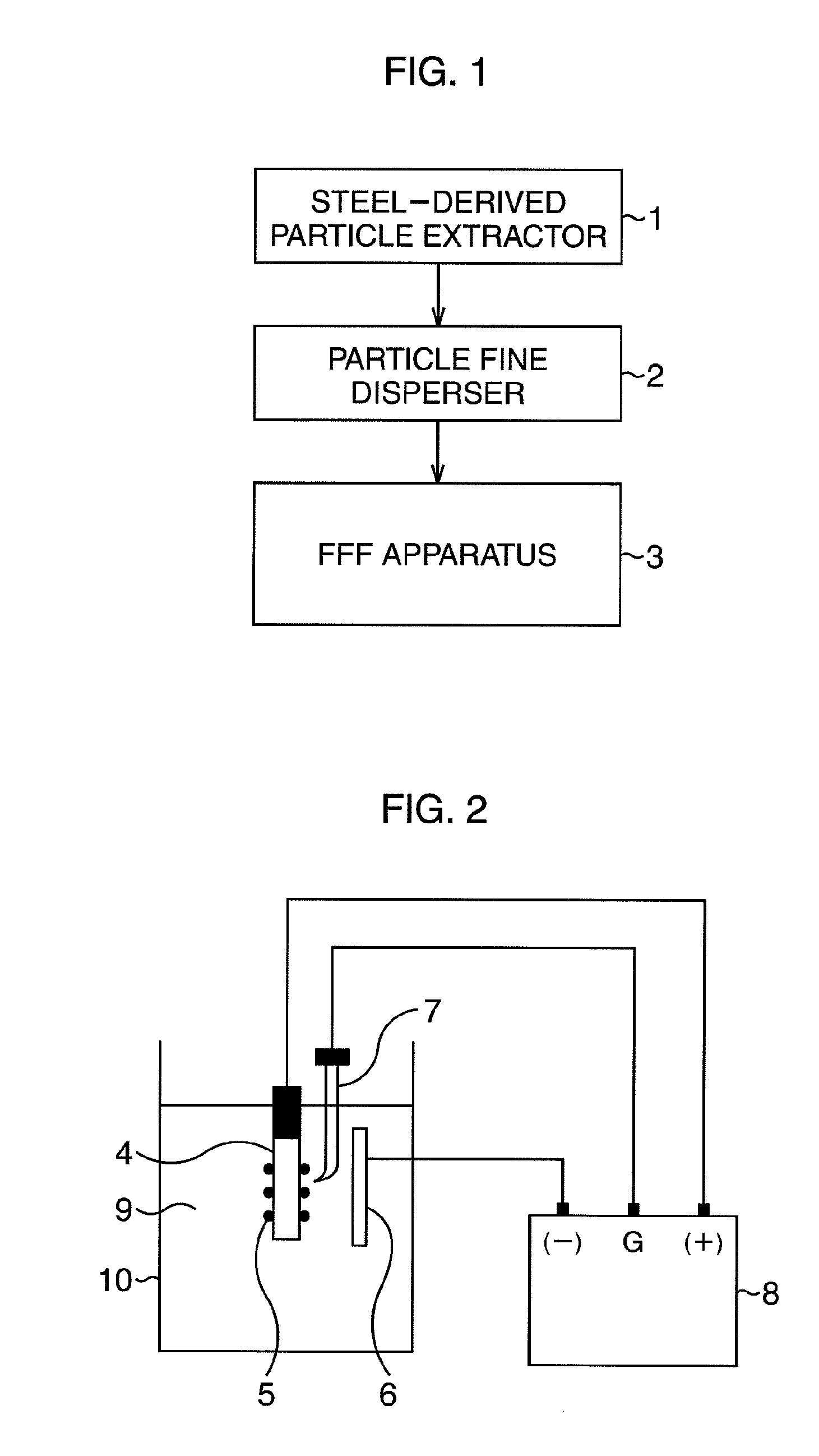Method of analyzing particle size distribution of particles in metal material
a technology of metal material and particle size distribution, applied in the field of method of analyzing particle size distribution of particles in metal material, can solve the problems of aluminum-series oxides causing various non-conformities, considerable degradation of steel quality, and surface defects on thin automotive steel sheets, etc., and achieve high accuracy
- Summary
- Abstract
- Description
- Claims
- Application Information
AI Technical Summary
Benefits of technology
Problems solved by technology
Method used
Image
Examples
example
[0089]Examples of the present invention will be explained below. Note that the present invention is not limited to the conditions adopted in the Examples.
[0090]According to the flow illustrated in FIG. 1, the particles in a steel material were extracted and dispersed into a liquid, and then measured with respect to the size and number density, using the FFF apparatus, by the method of particle analysis according to the embodiment.
[0091]A high-Si steel sample (Si: 3% by mass, Mn: 0.1% by mass, S: 0.03% by mass, Al: 0.03% by mass, N: 0.01% by mass) was processed into a 20 mm×40 mm×0.3 mm size, and subjected to chemical polishing so as to remove an oxide film and the like such as scale or the like in the surficial portion, to thereby expose the metal layer. In this process, the high-Si steel sample was sampled from each of steel materials manufactured under normal temperature condition (1000° C.), and under higher temperature condition (1100° C.) higher by approximately 100° C. than th...
PUM
| Property | Measurement | Unit |
|---|---|---|
| sizes | aaaaa | aaaaa |
| size | aaaaa | aaaaa |
| volume | aaaaa | aaaaa |
Abstract
Description
Claims
Application Information
 Login to View More
Login to View More - R&D
- Intellectual Property
- Life Sciences
- Materials
- Tech Scout
- Unparalleled Data Quality
- Higher Quality Content
- 60% Fewer Hallucinations
Browse by: Latest US Patents, China's latest patents, Technical Efficacy Thesaurus, Application Domain, Technology Topic, Popular Technical Reports.
© 2025 PatSnap. All rights reserved.Legal|Privacy policy|Modern Slavery Act Transparency Statement|Sitemap|About US| Contact US: help@patsnap.com



